French Beans Plant Care For Bumper Harvests With Emily Cupit

VEGETABLES > FRENCH-BEANS

Elizabeth is a Permaculture Garden Designer, Sustainability Consultant and Professional Writer, working as an advocate for positive change. She graduated from the University of St. Andrews with an MA in English and Philosophy and obtained a Diploma in Applied Permaculture Design from the Permaculture Association.
Reviewed By DAN ORI

Dan has over 27 years’ under his belt caring for plants and gardens. Working as a Horticultural Instructor and Consultant, he draws on a diverse range of experience that includes working as a Head Gardener, Tree Surgeon, Garden Centre Trouble Shooter, and writer of academic papers. Dan has a Level 3 Diploma in Horticulture and is currently a candidate for the RHS’s most prestigious award – The Master of Horticulture.
Contributions From EMILY CUPIT

Emily is a Gardening Writer, Photographer and Videographer from Derbyshire, UK. She is the Founder of Emily's Green Diary - a community of more than 75,000 people who share in her gardening journey.

Gerald Stratford has been growing his own veg since the age of 4. He is the author of ‘Big Veg’ and is hailed as ‘The King Of Veg’ by his audience - with almost 500,000 keen followers across his various social accounts.
FRENCH BEANS GUIDES
French beans are a great addition to a homegrown vegetable plot.
French beans, or green beans, are commonly cultivated through temperate and subtropical regions as an annual crop.
This is a crop which can provide a range of benefits.
As a legume, French beans provide not only an edible yield, but also help to maintain fertility in your garden.
Like other legumes, they have formed a symbiotic relationship with bacteria in their roots which take nitrogen from the air and make it available in the soil.1Wagner, S. (2011b). Biological Nitrogen Fixation. The Nature Education Knowledge Project. Retrieved March 16, 2023, from https://www.nature.com/scitable/knowledge/library/biological-nitrogen-fixation-23570419/

Some of that nitrogen is used by the plant themselves, but some may be available for the uptake of neighbouring plants, or for plants which follow the beans in rotation.
Overview
| Botanical Name | Phaseolus vulgaris |
| Common Name(s) | French Beans, Green Beans |
| Plant Type | Annual / Vegetable / Climber |
| Native Area | Americas – Cultivated |
| Hardiness Rating | H2/H3 |
| Foliage | Three oval smooth-edged leaflets |
| Flowers | White, pink or purple |
| When To Sow / Plant | April – July |
| Harvesting Months | July – September |
Sunlight
Preferred
Full Sun
Exposure
Sheltered
Size
Height
Varies
Spread
Varies
Soil
Preferred
Any Fertile Soil
Moisture
Moist and well drained
pH
Neutral to Slightly Alkaline
French beans, also known as common beans, are cultivars of Phaseolus vulgaris.
A herbaceous annual plant, this crop is most commonly grown in the UK for the tender pods, eaten before the seeds inside develop (often called green beans).
These plants however can also be left to grow on for a yield of dry beans which can be taken from the pods at maturity.

Cultivars produce many familiar dried beans, such as the haricot, kidney bean, cannellini bean and pinto bean for example.
These are pulses which can be a valuable addition to a homegrown diet – so growing types for a yield of dry beans could also be an interesting thing to consider in your garden.
Planting Guidelines
Climbing beans are ideal for garden growing.
They do best in the ground with sturdy supports, though they can also be grown in larger containers.
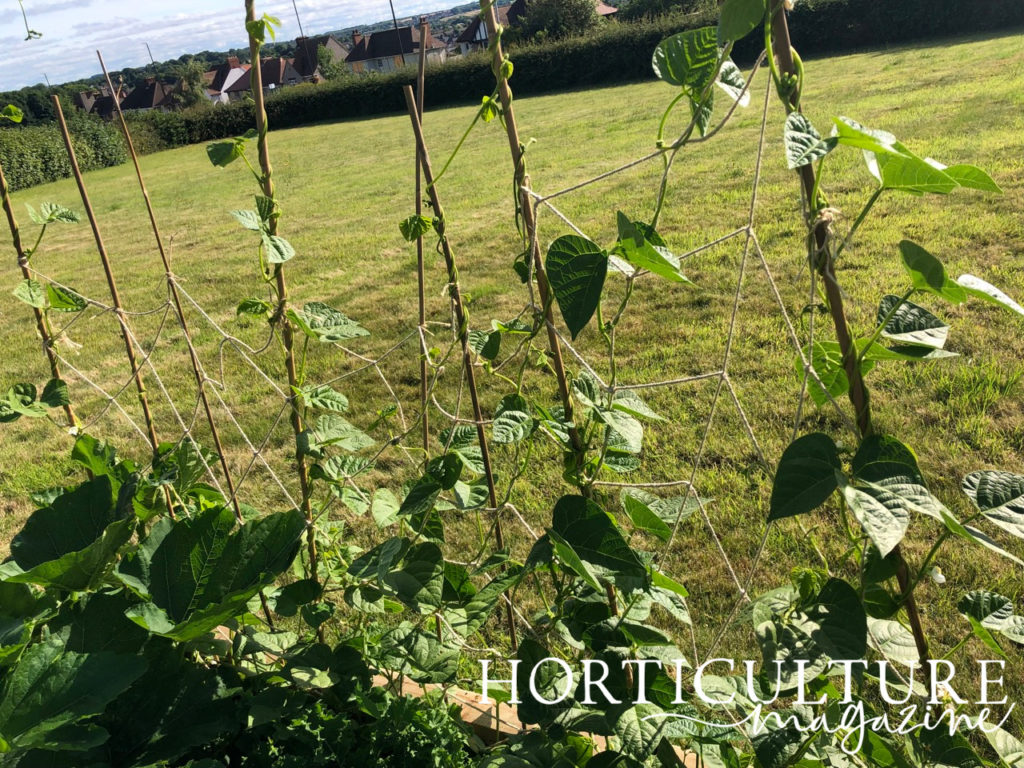
Dwarf or bush types are great where space is limited, and do very well in containers.
They can also work well in hanging baskets or other suspended containers.
Spacing & Depth
Sow French beans around 5cm deep, placing each one into a small pot, module or soil block if sowing indoors, or spacing around 15cm apart if direct sowing.
If planning on growing on your beans in a container, containers should be 30-45cm wide for dwarf types, and 75cm wide and 45cm deep for climbing varieties.
Hardening Off

From the end of May or in early June (depending on your location and the weather conditions) harden off your young plants to get them used to outdoors conditions.
This simply means gradually moving them outside – gradually exposing them to outdoors conditions for increasing lengths of time over a couple of weeks.
Land Preparation
If you are growing climbing types which need support, it is best to get this support in place before sowing or planting out.
There are various different support options which you could consider.
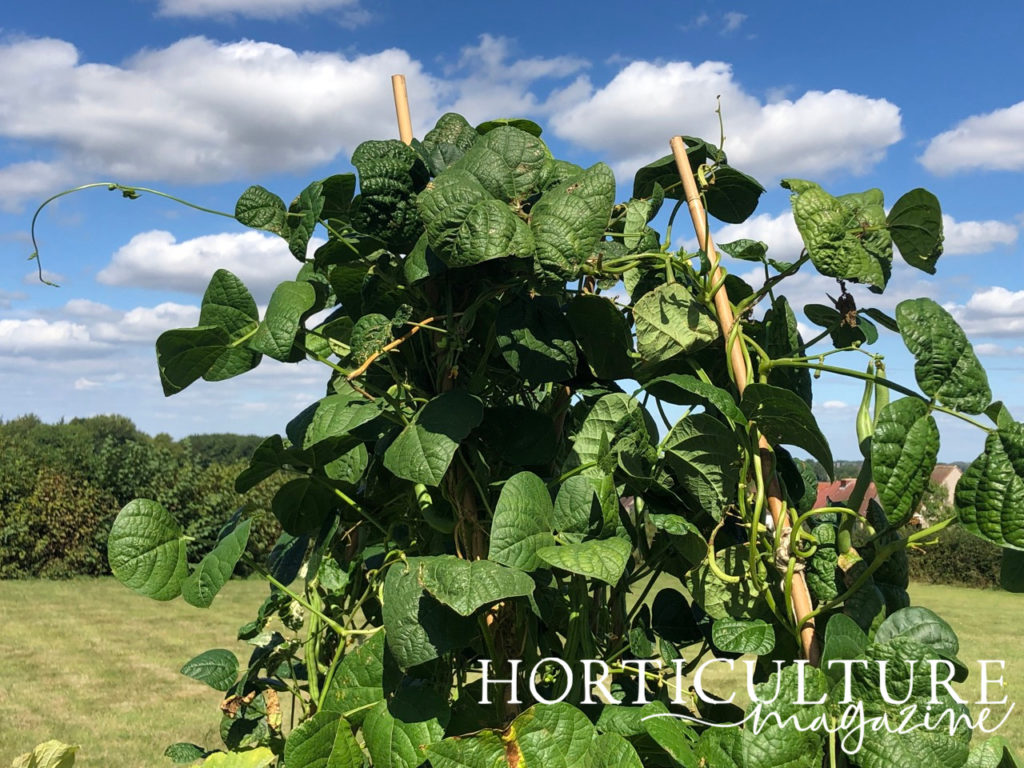
Choose a suitable location for your French beans, and prepare the soil by top dressing with plenty of homemade compost or well-rotted manure.
Make sure the area is weed-free, and water well.
Planting Out
If you are not direct sowing, indoors grown plants can be planted out (after the hardening-off process).
As when direct sowing, make sure you wait until the conditions are reliably frost-free, and aim for a spacing of around 15cm between plants.
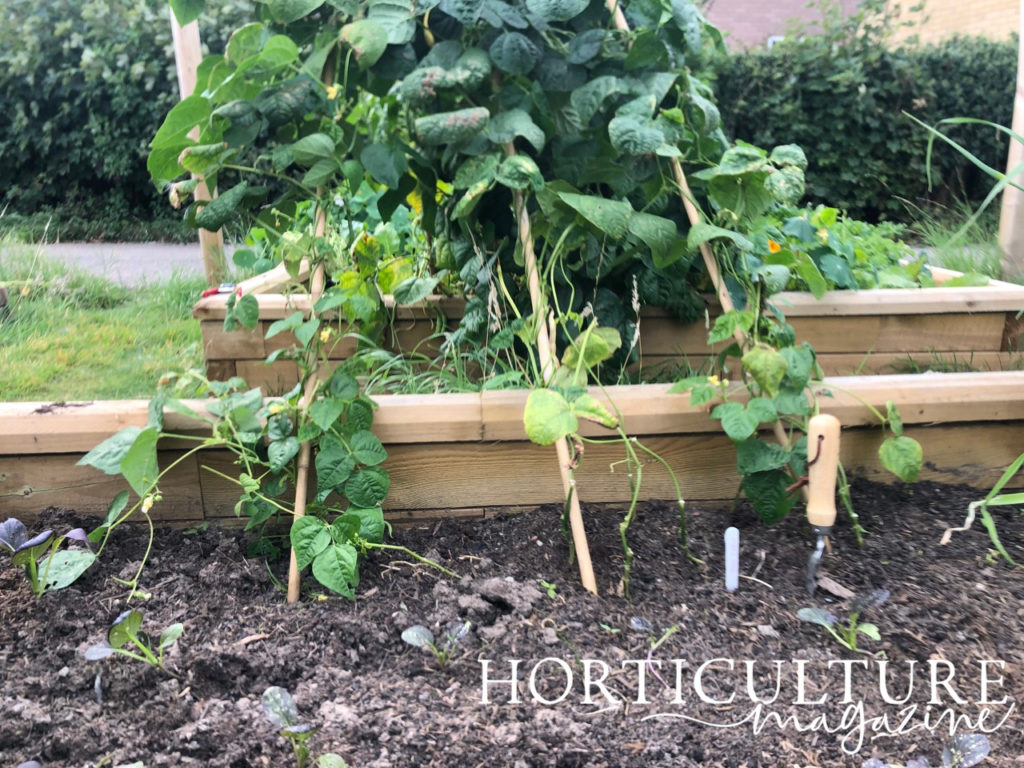
Make sure that you water the plants well before and after planting out.
With climbing beans, place the plants at the base of the support structure or structures you have installed and tie them in loosely with natural twine.
Plant Care
French beans are relatively easy to grow as long as you place them in the right location and meet all of their basic needs.
Watering

French beans have relatively high water requirements and will provide the highest yields when watered regularly.
Remember, if growing in containers, more frequently watering will generally be required.
Soil & Feeding
Mulching around your French beans will help retain soil moisture, and will also help with fertility and weed control.
A mulch of high-quality homemade compost, worm castings or well-rotted manure will be ideal.
Light
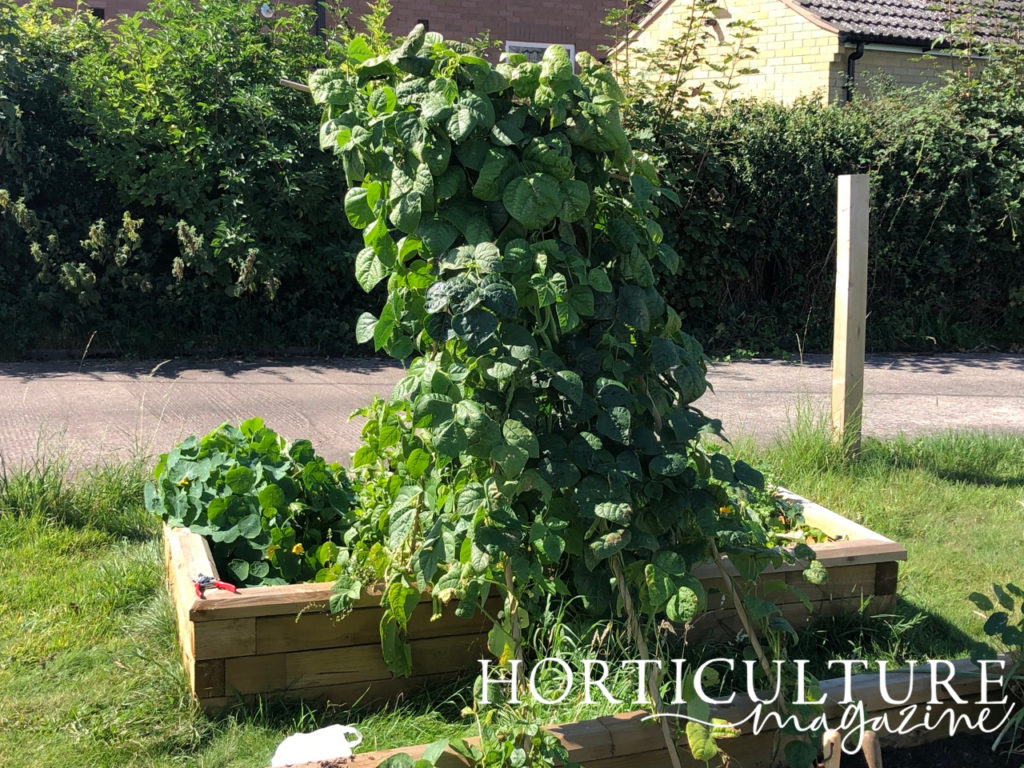
French beans should be grown in a location in full sun, which receives as much light as possible throughout the summer months.
Pollination
French beans are self-pollinated and are rarely insect pollinated.
Cross-pollination is rarely an issue for these plants.
“Pollen is typically released the night before the flower opens and the next day, the anthers and stigma typically make contact as the flower opens,” shares Dan Ori, a Horticultural Consultant.
Weeding
Weeding around French beans is important.
Keep the surrounding soil covered with mulch, or consider planting ground cover companion plants, which will not compete overly with the beans for water and nutrients.

French beans can be excellent companion plants for a range of other crops, due to their nitrogen-fixing capability.
“French beans will rarely enrich the soil with nitrogen for other plants to access, as they use the nitrogen they fix for their own crop production,” adds Dan.
“However, they will not normally reduce the soil’s nitrogen levels which is very useful if you are practising crop rotation.”
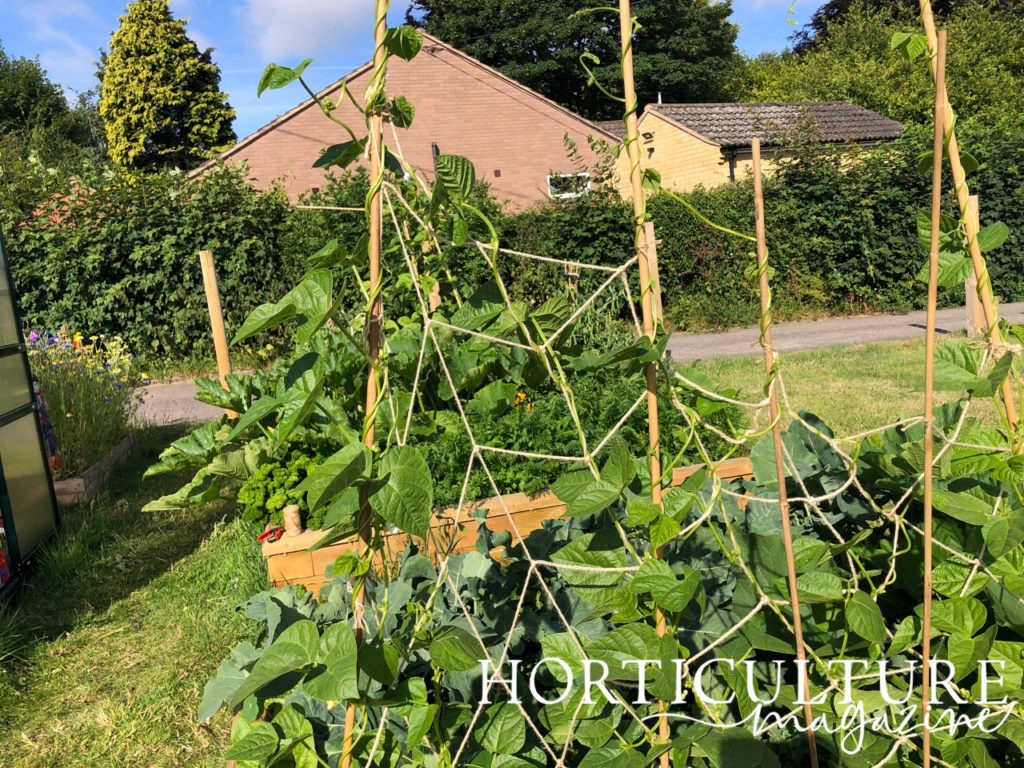
“For a companion planting tip, I advise not planting Tagetes species (marigolds) near nitrogen fixers as some studies suggest it affects their root ability to fix nitrogen.”
One of the most famous companion planting combinations involves growing climbing beans alongside corn and squash.
This beneficial combination is called the ‘three sisters’ companion planting scheme.2Kruse-Peeples, M. (2016, May 27). How to Grow a Three Sisters Garden. Native-Seeds-Search. Retrieved March 16, 2023, from https://www.nativeseeds.org/blogs/blog-news/how-to-grow-a-three-sisters-garden
The corn is the supporting sister, giving support to the beans.
The beans fix nitrogen, and the squash provides ground cover, for moisture retention and weed control.

Beans can also be beneficial companion plants for a number of other crops – especially green leafy vegetables with high nitrogen needs, as Gerald Stratford, the King of Veg, explains:
“You can grow French beans with runner beans and courgettes, but honestly, if you see a plant you want to grow with your beans, have a go.
“It’s better to have a go and fail than not have a got at all.”
Storage
If you are not eating your green beans right away, you can store them (unwashed) in the crisper drawer of your fridge for up to a week or so.
If you wish to freeze your green beans, blanch them by boiling them for 2-3 minutes, then plunging then into icy water.
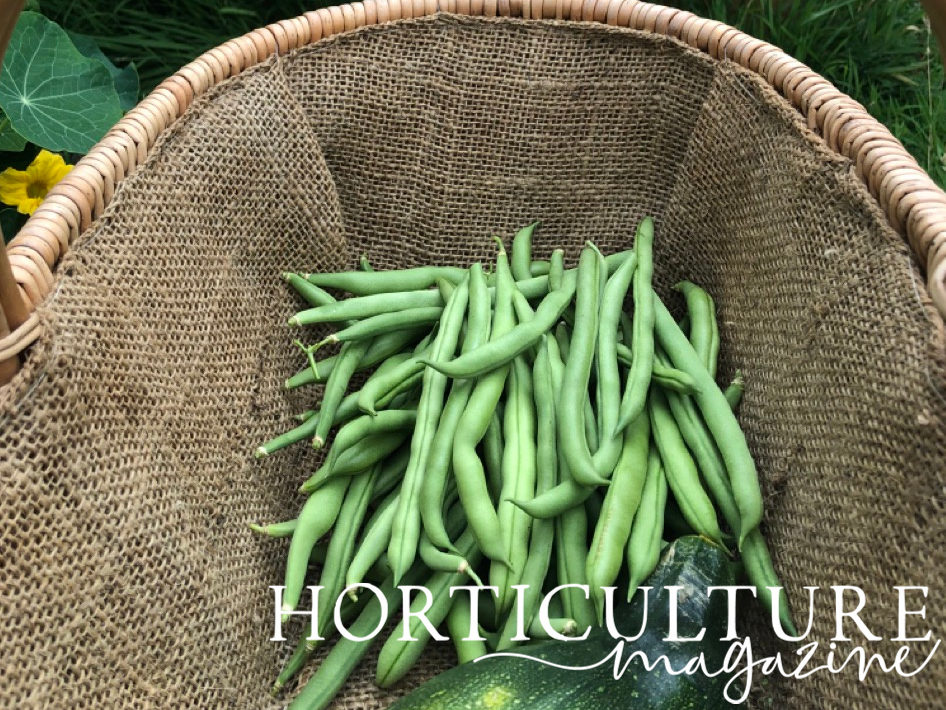
Once blanched, place them in the freezer in sealed containers.
They should keep well for around 8-10 months.

Shelled beans should be fully dried, then placed in airtight containers.
Common Types
French beans are typically divided into two categories: climbing beans, and dwarf or bush beans.
The former grow tall, usually requiring some support, while the latter have a bushier, shorter form and do not always need a trellis or staking.
Some great climbing beans to consider include:

- ‘Abundance’
- ‘Algarve’ (AGM)
- ‘Blue Lake’
- ‘Cherokee Trail of Tears’
- ‘Cobra’ (AGM)
- ‘Golden Gate’ (AGM)
- ‘Neckarkonigin’
And some good dwarf types to consider include:
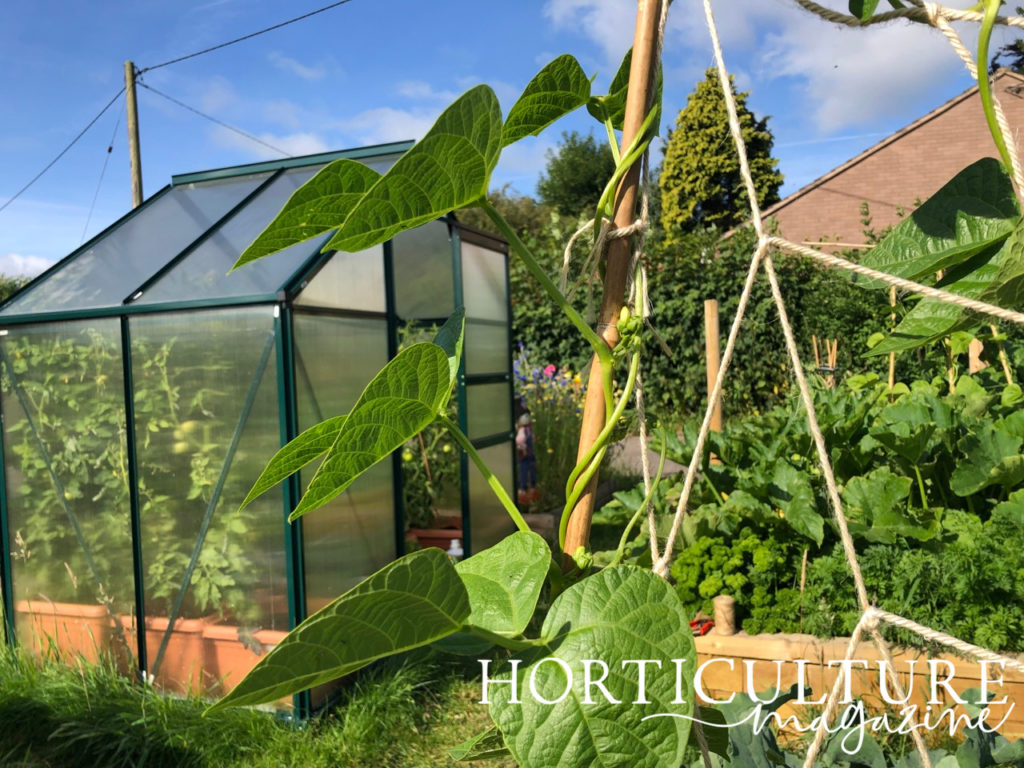
- ‘Aquilon’
- ‘Boston’ (AGM)
- ‘Elba’
- ‘Lilana’
- ‘Purple Teepee’ (AGM)
- ‘Sprite’ (AGM)
- ‘Tendergreen’
If you would like to harvest dry beans rather than green beans try:

- ‘Borlotto Lingua di Fuoco’
- ‘Jacob’s Cattle Gold’
- ‘Lingot’
- ‘Mor Kristin’
- ‘Oro’
- ‘Taylor’s Dwarf Horticultural Long Pod’ (‘October Bean’)
- ‘Yin Yang’
References
- 1Wagner, S. (2011b). Biological Nitrogen Fixation. The Nature Education Knowledge Project. Retrieved March 16, 2023, from https://www.nature.com/scitable/knowledge/library/biological-nitrogen-fixation-23570419/
- 2Kruse-Peeples, M. (2016, May 27). How to Grow a Three Sisters Garden. Native-Seeds-Search. Retrieved March 16, 2023, from https://www.nativeseeds.org/blogs/blog-news/how-to-grow-a-three-sisters-garden
